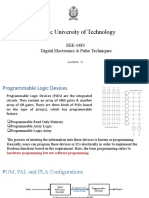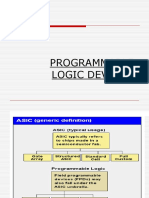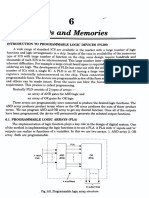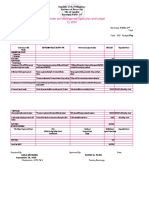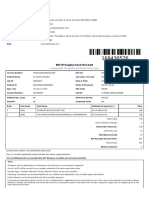0% found this document useful (0 votes)
20 views19 pagesProgrammable Logic Devices - Updated
Programmable Logic Devices (PLDs) are integrated circuits that can be configured to perform various logical functions through programming, which refers to hardware programming. There are three main types of PLDs: Programmable Read Only Memory (PROM), Programmable Logic Array (PLA), and Programmable Array Logic (PAL), each with distinct features regarding their programmable arrays. PROM allows for one-time programming, PLA has programmable AND and OR arrays, and PAL has a programmable AND array with a fixed OR array, making PAL easier to program but less flexible than PLA.
Uploaded by
dsushii460Copyright
© © All Rights Reserved
We take content rights seriously. If you suspect this is your content, claim it here.
Available Formats
Download as PDF, TXT or read online on Scribd
0% found this document useful (0 votes)
20 views19 pagesProgrammable Logic Devices - Updated
Programmable Logic Devices (PLDs) are integrated circuits that can be configured to perform various logical functions through programming, which refers to hardware programming. There are three main types of PLDs: Programmable Read Only Memory (PROM), Programmable Logic Array (PLA), and Programmable Array Logic (PAL), each with distinct features regarding their programmable arrays. PROM allows for one-time programming, PLA has programmable AND and OR arrays, and PAL has a programmable AND array with a fixed OR array, making PAL easier to program but less flexible than PLA.
Uploaded by
dsushii460Copyright
© © All Rights Reserved
We take content rights seriously. If you suspect this is your content, claim it here.
Available Formats
Download as PDF, TXT or read online on Scribd
/ 19







